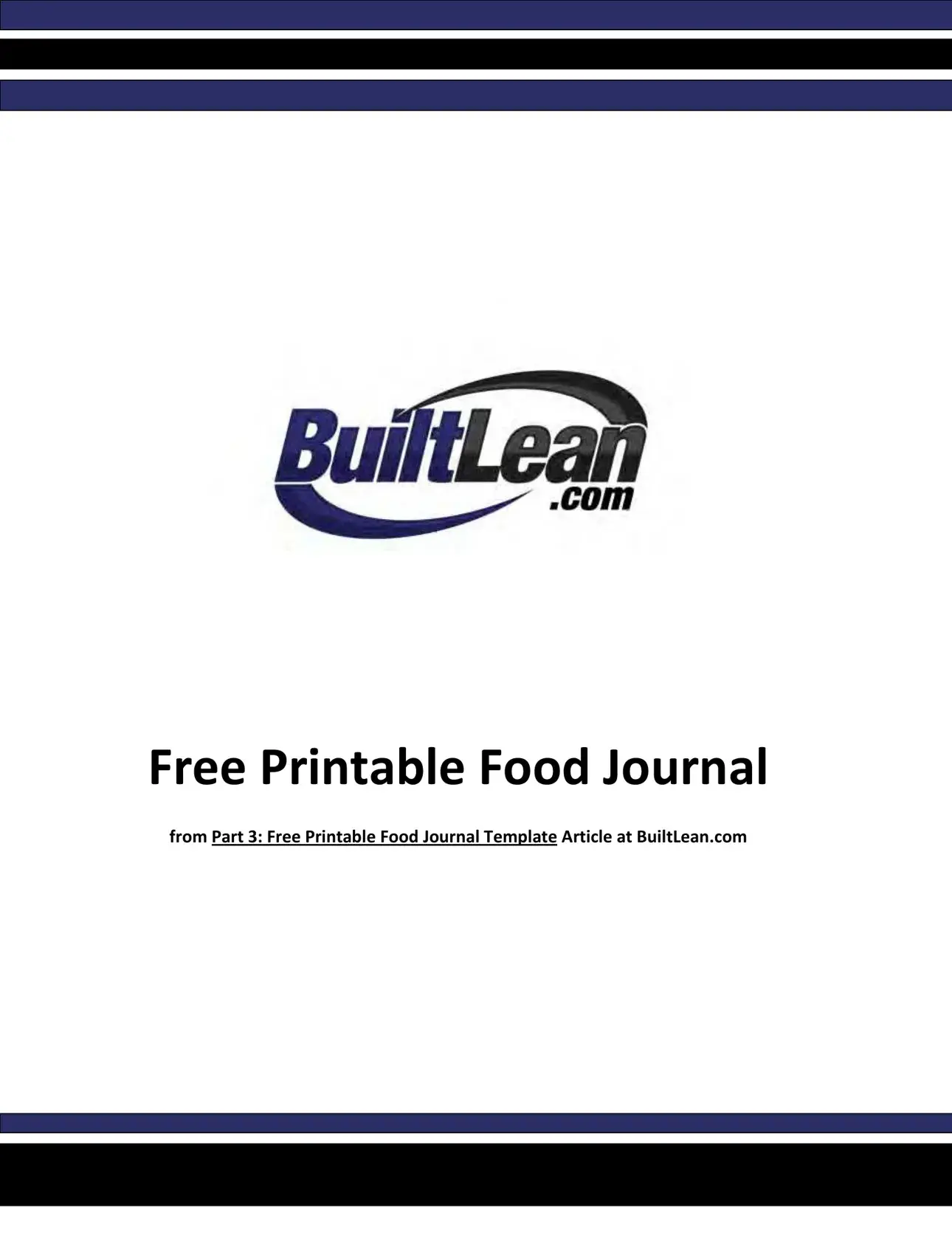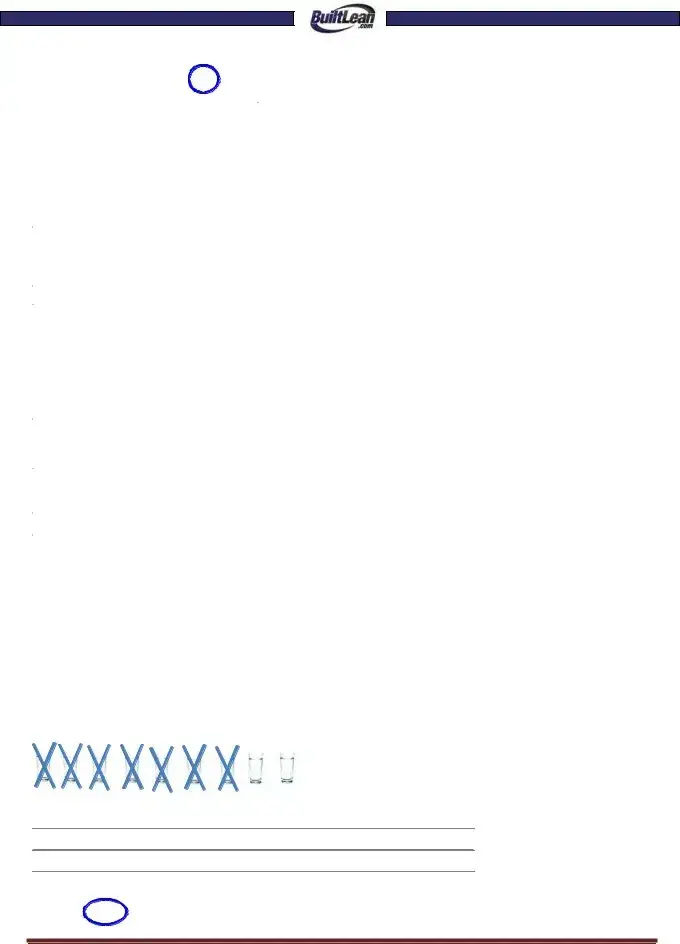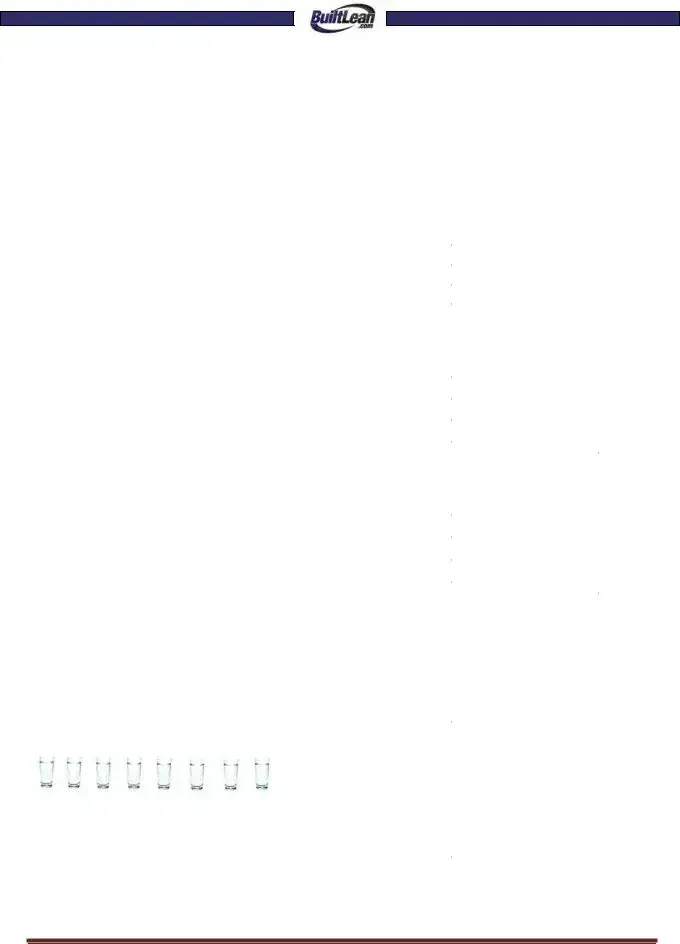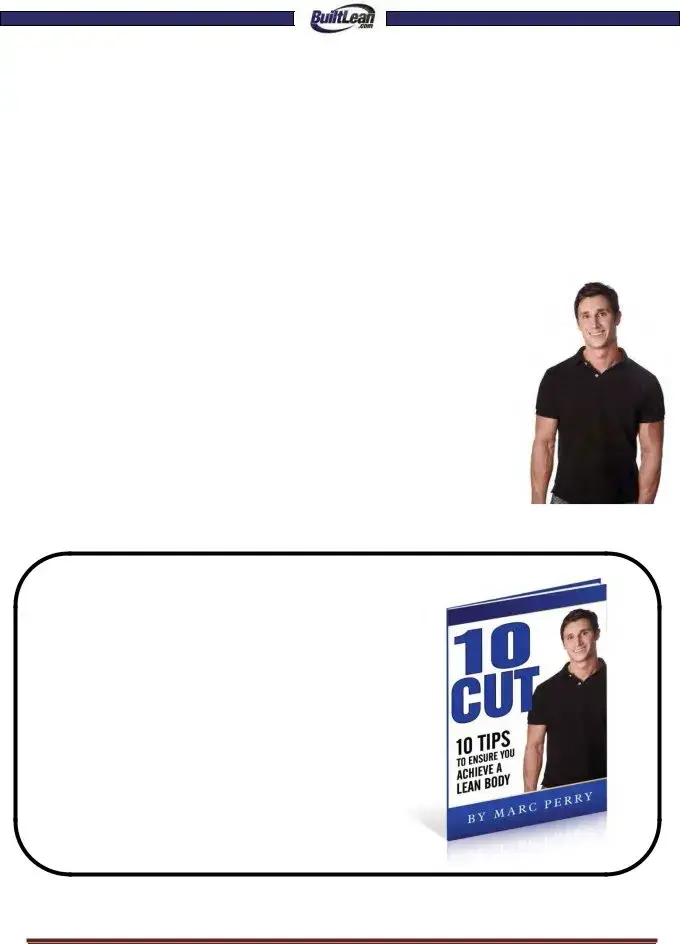Free Printable Food Journal
from Part 3: Free Printable Food Journal Template Article at BuiltLean.com
Feel free to share this report with friends!
Copyright © 2010 Elite Training Partners LLC
All rights reserved.
No part of this book may be reproduced in any form without permission in writing from the author or publisher, except for the inclusion of brief quotations in a review.
WARNING: This report is protected by Federal copyright law. Violators will be prosecuted to the fullest extent of the law. Published by Elite Training Partners LLC in the United States of America.
DISCLAIMER
This report is for reference and informational purposes only and is no way intended as medical counseling or medical advice. The information contained herein should not be used to treat, diagnose, or prevent a disease or medical condition without the advice of a competent medical professional. Most of the information applies to everyone in general; however, not everyone has the same body type. We each have different responses to exercise depending on our choice of intensity and diet. Before making any changes in your lifestyle, you should consult with a physician to discover the best solution for your individual body type. The author, writer, editors, and graphic designer shall have neither liability nor responsibility to any person or entity with respect to any damage or injury alleged to be caused directly or indirectly by the information contained in this report. The entire contents of this guide is protected by international copyright and trademark laws. The owner of the copyrights and trademarks is Elite Training Partners LLC, its affiliates, or other third party licensors.
YOU MAY NOT MODIFY, COPY, REPRODUCE, REPUBLISH, UPLOAD, POST, TRANSMIT, OR DISTRIBUTE, IN ANY MANNER, THE MATERIAL IN THIS PRESENTATION, INCLUDING TEXT, GRAPHICS, OR PHOTOS. You may print and download portions of material from this Presentation solely for your own non-commercial use provided that you agree not to change or delete any copyright or proprietary notices from the materials. You agree that you shall have no recourse against Elite Training Partners LLC for any alleged or actual infringement or misappropriation of any proprietary right in your communications to Elite Training Partners LLC.
Copyright © Elite Training Partners LLC. All Rights Reserved. |
Page 2 |
How To Keep A Food Journal Tips
Make Counting Veggies/Fruits Easy
Tabulating all the different food items in your meals and snacks can be a BIG pain. Make your life easier by counting a cup of veggies as 50 calories, and a cup worth of fruit as 100 calories. Just watch out for avacado, which is a vegetable but very high in (healthy) fat, which means it has a lot of calories!
Portion Size Reference
Here are a list of portion sizes so you can eyeball them:
3 oz. of meat is as big as a deck or cards, or a blackberry 1 ounces of cheese is about size of your thumb
1 cup is equal to the size of a baseball
A teaspoon is the tip of the thumb to the first joint A tablespoon is three thumb tips
Use NutritionData.com For Calorie Reference
If you can't find the calorie information for foods that you want to eat, check out NutritionData.com. You can search for just about any food that you want to eat. Just pay attention to serving sizes when viewing calorie content.
How to Calculate Calorie % Breakdown for the Day
For your reference, 1 gram of protein has 4 calories, 1 gram of carbohydrates has 4 calories, and 1 gram of fat has 9 calories. Another quick tip, 1 gram of fiber is equal to 1 gram of carbs, but it has no calories. So foods that are high in fiber will be less in calories than you would expect. One more thing, it's ok if your calorie breakdown percentages aren't perfect, you're just trying to get a sense of your macronutrient balance.
NOTE: The following page is a SAMPLE Food Journal for a 140 pound woman who is looking to lose 20 pounds by eating roughly 1400 calories each day. She's looking for moderate carb, moderate fat, higher protein intake, which is reflected in the calorie % breakdown.
Copyright © Elite Training Partners LLC. All Rights Reserved. |
Page 3 |
|
|
|
|
|
|
|
|
|
|
|
|
|
|
|
|
|
|
|
|
|
|
|
|
|
|
|
|
|
|
|
|
|
|
|
|
|
|
|
|
|
|
|
|
|
|
|
|
|
|
|
|
|
|
|
|
|
|
|
|
|
! |
|
|
|
|
|
|
|
|
|
|
|
|
|
|
|
|
|
|
|
|
|
|
|
|
|
|
|
|
|
! |
|
|
|
|
|
|
|
|
|
"# |
$ |
|
|
|
|
|
|
|
|
|
|
|
|
|
|
|
|
|
|
|
|
|
|
|
|
|
|
|
|
|
|
|
|
|
|
|
|
|
|
|
|
|
|
|
|
|
|
"#$ |
|
|
|
|
|
|
% |
|
|
$#! |
&'!() |
|
|
|
|
*+ |
,%%- |
|
|
|
|
|
|
|
|
|
|
|
|
'#% |
.#!/0 |
|
|
|
|
|
|
|
|
|
|
|
|
|
|
|
|
|
|
'#% |
)/*! |
|
|
|
|
|
|
|
|
1%2 |
10 |
|
|
|
|
|
|
|
|
|
|
|
|
|
|
|
|
|
|
|
|
|
|
|
|
|
|
|
|
|
|
|
|
|
|
|
|
|
|
|
|
|
|
|
% |
|
|
$#! |
|
|
|
|
|
& |
& |
|
|
|
|
|
|
|
|
|
|
|
|
% |
3%# |
|
|
|
|
|
|
|
|
|
|
|
|
|
|
|
|
|
|
"# |
/4 |
|
|
|
|
|
|
|
|
|
|
|
|
|
|
|
|
|
|
|
|
|
|
|
|
|
|
|
|
|
|
|
|
|
|
|
|
|
|
|
|
|
|
|
|
|
|
|
|
|
|
|
#! |
|
|
|
|
|
|
% |
|
|
,5# |
3 |
|
|
|
|
$( |
& |
|
|
) |
!() |
|
|
|
|
36# |
-7 |
|
|
|
|
|
|
|
|
|
|
|
|
|
|
|
|
|
|
|
|
|
|
|
|
|
|
|
|
|
|
|
$#!%&#'( |
|
|
|
|
|
|
)*+
8/+-%%-8/9#5-98(%-%
9+--+/-28/#%5
8!(128/5/(91/67
,+-.
!" #
Copyright © Elite Training Partners LLC. All Rights Reserved. |
Page 4 |
,+-.
!" #
Copyright © Elite Training Partners LLC. All Rights Reserved. |
Page 5 |
About BuiltLean.com
BuiltLean.com is a free resource that helps busy individuals achieve strong, lean, healthy bodies in less time and with less hassle. Topics include:
Motivation, exercise and nutrition tips that you can apply to your life
Exclusive interviews with Nutritionists, Fitness Pros, and Health Experts
Interviews with people who have successfully transformed their bodies
Discussion about controversial topics in the fitness industry
Other fitness related topics that will pique your interest
About Marc Perry
Marc is the founder of BuiltLean.com and is CEO of Elite Training Partners, a privately held company based in New York City that develops fitness programs and services for busy professionals with demanding lifestyles.
A Yale graduate and former investment analyst, Marc has dedicated his life to helping others improve their health. He is a Certified Strength & Conditioning Specialist (National Strength & Conditioning Association) and a Certified Personal Trainer (American Council on Exercise).
You can connect with Marc on Facebook (www.facebook.com/BuiltLean), or Twitter marcaperry. Press inquiries should be directed to press@elitetrainingpartners.com.
Get My FREE Report Now!
Learn how to lose fat WITHOUT losing muscle How to get TWICE the results in HALF the time How fast can you actually lose fat?
The ONLY way to permanently change your body
Go to BuiltLean.com/FreeReport to get this
FREE report right away while it's available!
Copyright © Elite Training Partners LLC. All Rights Reserved. |
Page 6 |






